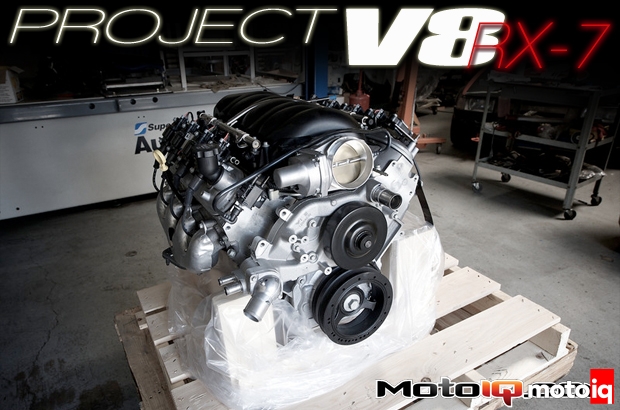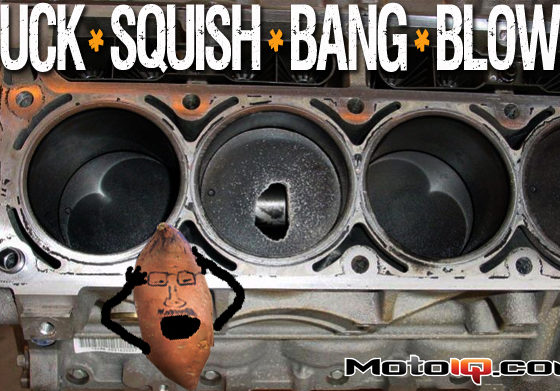,
Another cool feature is the head bolts. The old small block had 5 short head bolts. The bolts were short and the threaded area of the small block was close to the deck surface. This created many problems in this engine. First, the 5 bolts seriously compromised the location of the pushrods, combustion chamber geometry and port locations. Second, the close location of the threads to the deck surface caused distortion to both the block’s deck and the roundness of the bores. This causes issues with head gasket sealing, ring seal, friction and life of the bores and pistons.
 |
| In this front view of the engine you can see how the block’s skirts extend down below the crank. In the small block Chevy the block ends at the main cap parting line. You can see why the deep skirt block is so much stronger, the steel main caps bolt to the block rails sideways. They are also held downward by four bolts for a total of six bolts. The old small block only had two bolts. The head bolts also extend deep into the engine to the base of the cylinders to put a compressive load on the iron sleeves and to reduce bore distortion for less friction and better ring seal. |
It is not uncommon for the bore and deck of a small block to distort by several thousandths of an inch when the head bolts are torqued. So bad is this issue that a small block must be machined with torque plates in place to simulate the distortion of the cylinder head for accurate boring! The LS motor uses four long head bolts per cylinder with an 88mm shank sinking deep into the heart of the block by the main cap webbing.
The long bolts have a long threaded area to reduce stress and the likelihood of stripping. This does several things; it greatly reduces bore distortion as the clamp load is coming from within the block’s strongest structure. It nearly eliminates deck distortion for much improved head gasket sealing. The bolts go past the iron sleeves so the long bolts compress the sleeves to the head holding the entire sleeve in compression. This greatly improves block integrity. Finally having 4 bolts per cylinder gives the designers of the cylinder heads and valvetrain a lot more leeway in designing a combustion chamber geometry that burns well with ports that flow good with less interference with pushrod tunnels and bolt holes.
 |
| Some small but important features are seen here on the LS3 block. The smooth radius at the bottom of the bores were found by FEA to greatly improve strength and stiffness of the block. The windows at the bottom of the bore were carefully shaped and placed to reduce windage and crankcase pressurization. |
So far in our look inside, the LS motor is proving to be state of the art. Look for our next installment as we continue to break down the E-ROD LS3 in detail.
Sources



